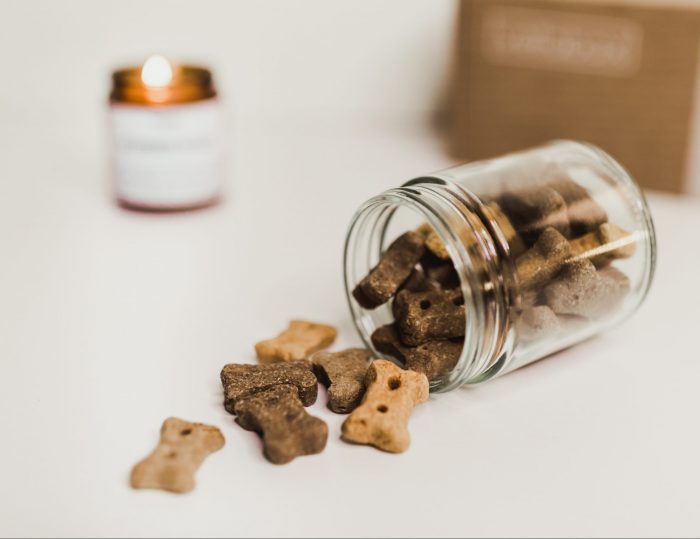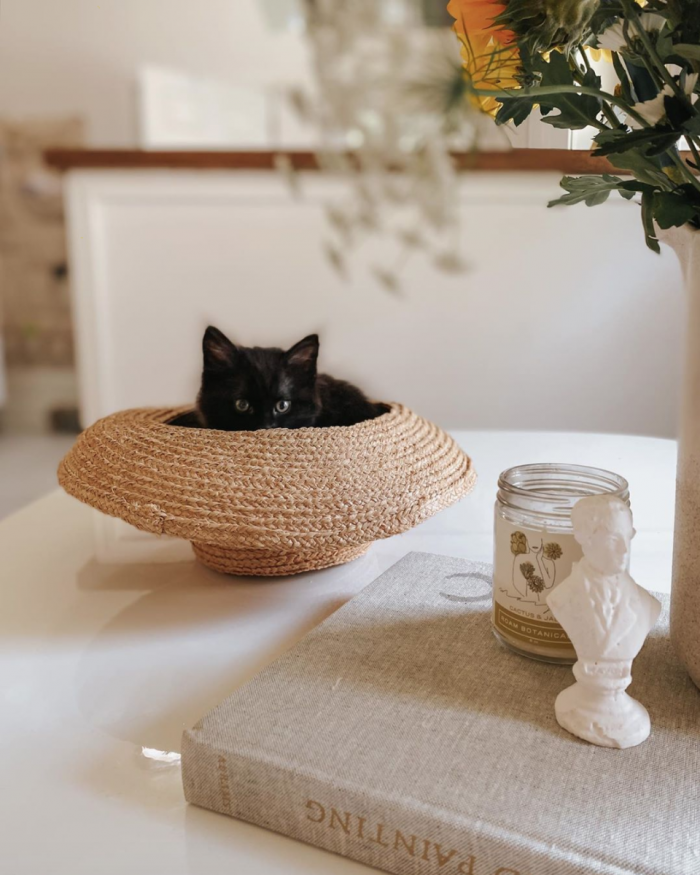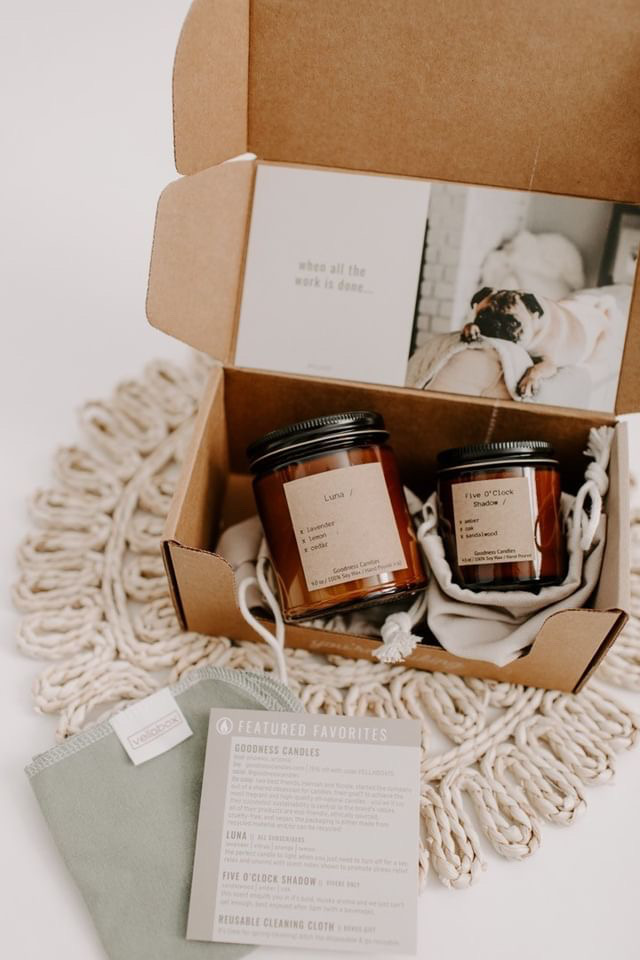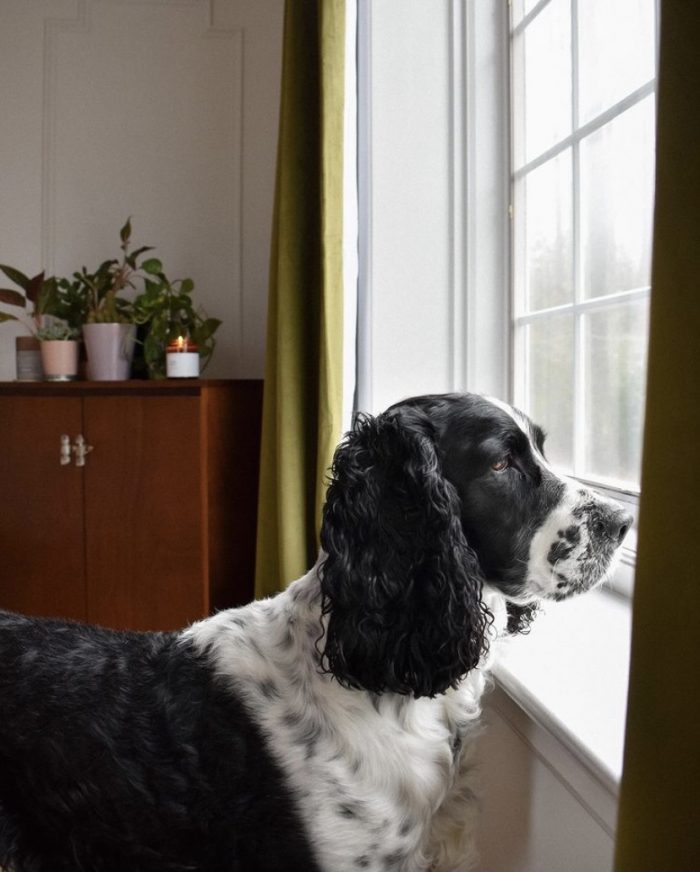Are Candles Pet-friendly?
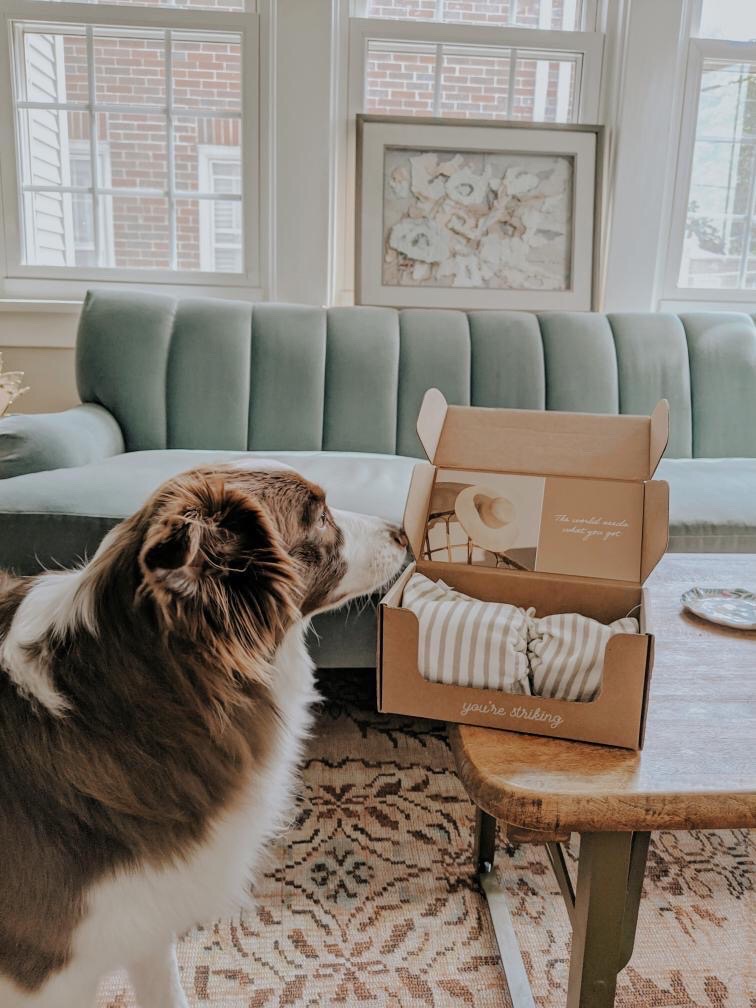
Picture this: You’re all cozied up in your living room watching a movie on a Saturday night.
Your cat is curled up beside you on the couch. On your other side, your dog hopes a piece of your popcorn falls to the floor for them to snag.
With the lights off, the room is illuminated by the lit candle on the coffee table.
With notes of citrus, lush greens, sugar and musk, the rain + sugarcane candle keeps your house smelling fresh.
So, how might your pets react to candles?
And what can you do to best guarantee the health and safety of both you and your pets?
And, as always, remember to put candles in a spot that your pets can’t reach as fire safety.
Candle Wax History 101
Candles come in all sorts of shapes and sizes.
They are also filled with an abundance of ingredients depending on the type of candle it is. Typically, conventional candles start from paraffin wax and are made with artificial fragrances.
Paraffin wax is a petroleum byproduct, and it is recognized as the most commonly used wax in candle production.
Not sure if you have a paraffin wax candle at home? Look behind a picture on your wall or near the edges of your carpet.
Do you see some dark, sooty black gunk? That’s candle residue.
Deriving from petroleum, paraffin wax-based candles have been found to contain carcinogens and emit benzene, which can cause cancer and other diseases.
When these kinds of scented candles are burned, they emit other harmful chemicals and toxins into the air such as lead, naphthalene, formaldehyde and phthalates.
Phthalates have been associated with an increased risk of developing diabetes and birth defects.
These harmful chemicals not only impact our respiratory system and health, but also that of our pets.
Pets + Candles
Pets are attracted to new and different scents.
Many pleasing scents may entice dogs to nibble on candles, wax, or ingest oils. Ingesting most candles usually won’t cause any major harm. It typically leads to nothing more than an upset stomach.
When pets sniff a conventional candle with toxins, it can irritate and cause stress to their airways.
@itsvanessaashly
Some pets may have preexisting allergies or conditions such as feline asthma that can be exacerbated by scents.
The more they smell paraffin wax candles, the worse it becomes.
Because pets are much smaller than us humans, it’s easier for the chemicals from paraffin wax candles to build up in their bodies.
What About Essential Oils?
Essential oils originate from plant extracts and retain their natural smell, flavor or essence.
Hence the name, essential oils are usually used in their liquid state for aromatherapy practice. These aromatherapy practices are usually accompanied by diffusers where essential oils are dispersed into the air or using the oils solely.
Note: Essential oils are not meant to be consumed or digested. Ingesting these oils can cause serious side effects such as rashes, allergic reactions, etc.
@jessica.lyn.smith @olivia_cope @homesweetnola
To receive the benefits of essential oils, people usually inhale them. However, some apply these oils directly to their skin, but this is when you need to be cautious.
Avoid placing essential oils on irritated skin and sensitive parts of the body such as near the eyes, ears and mouth.
Rule of thumb, do a patch test on the inner part of your wrist to test for potential skin allergies if you are considering applying essential oils to your skin. Allow the test to sit for 24 hours for any irritation to occur.
Pets + Essential Oils
Essential oils seem to generate the most fear in regards to pet safety. This is because of the risks associated with oil usage.
Some holistic veterinary practices use essential oils to prevent fleas and ticks, skin issues and anxiety.
Experts deemed these oils, to name a few, safe to use on dogs such as:
- Peppermint oil: This scent is actually recommended as a top flea repellent for dogs. It can also energize a tired pup, soothe sore muscles and upset stomachs and improve pet moods. The April box includes Avocado + Mint with notes of jasmine, neroli, and lemon peel.
- Lavender oil: its calming effects can be helpful for PTSD and anxiety. In a lavender oil benefit study, it was shown to reduce pup car sickness by increasing restfulness and less movement. Free of parabens, Lavender Moon | 12 oz is 100% natural and packed with essential oils.
- Chamomile oil: This essential oil is an anti-inflammatory with its calming and gentle properties. It also helps to ease stressed pups.
If you wouldn’t want the oil going onto your skin or into your system, do the same for your furry friends. Keep in mind that there are oils that are considered toxic to pets. To name a few:
- Garlic
- Oregano
- Mustard
- Tea Tree
- Wintergreen
Some of these oils can have serious effects such as severe illness, seizures, vomiting, diarrhea, etc. Cats are more sensitive to the potentially dangerous side effects and risks. If your pet ingests essential oil by accident, they will likely experience a digestive upset.
It’s best to practice these holistic vet practices with a diffuser and remember, a few droplets can go a long way.
This is not to say that candles including essential oils aren’t safe. Just be careful of using essential oils by themselves and whether or not you make the personal decision to applying them to the body.
Scent Aversions
Which scents don’t your pets like and why?
Like their owners, pets have their own tastes in scents they prefer. This also means pets can respond differently to fragrance oils.
It can be tough to predict if your pet has a sensitivity to any of the ingredients and if they will have a reaction to fragrances.
While the fragrances used in clean and natural candles are as safe as possible, it’s always a good idea to consult a veterinarian if you have a reason for concern or just want peace of mind.
Candle Ingredients to Avoid
To recap, these are the ingredients to avoid in candles to keep you and your pets healthy:
- Lead wick
- Paraffin wax
- Formaldehyde
- Synthetic oil
Many wicks are now either in cotton or wooden form; however, stray away from wicks with any lead and metal inside that can release metals into the air. Same with paraffin waxes that can release chemicals and toxins such as formaldehyde and phthalates.
Keeping Your Pets Safe and Healthy
Have no fear, burning candles at home in the presence of your animals can still be a fun experience.
Keep in mind there are ingredients that are safe for you and your pets and smell fresh.
@lily_jieru @itsmeekenzie @ourlewislife
Ingredients that are safe:
- Cotton wick
- Soy, coconut or vegetable-based wax
- Natural ingredients
- Essential oils
To learn more about how we are committed to candles with all natural ingredients, head to our About page.
100% cotton wick helps set the mood while being sustainable, pet-friendly and healthy.
Plant-based waxes are a healthy and clean alternative to paraffin waxes. Soy wax, for example, is produced from soybean oil and gives off less residue. These natural waxes not only burn cleaner, but they also burn longer.
Soy and coconut waxes are considered some of the top waxes with the longest burn time. Our candles, made from all plant-based waxes, can reach up to 75 hours of burn time.
With natural ingredients comes more natural fragrances, including essential oils. While these oils pose risk when applied directly to the skin, they are safe to be inhaled in candle or diffuser form.
Again, remember like people, all pets are different, so they may react to different scents differently. Consult your vet before making drastic changes to implementing essential oils into your pet’s lifestyle or if you notice any side effects.
Want to make the switch to clean candles and pet-friendly today? Check out our Candle Shop!





